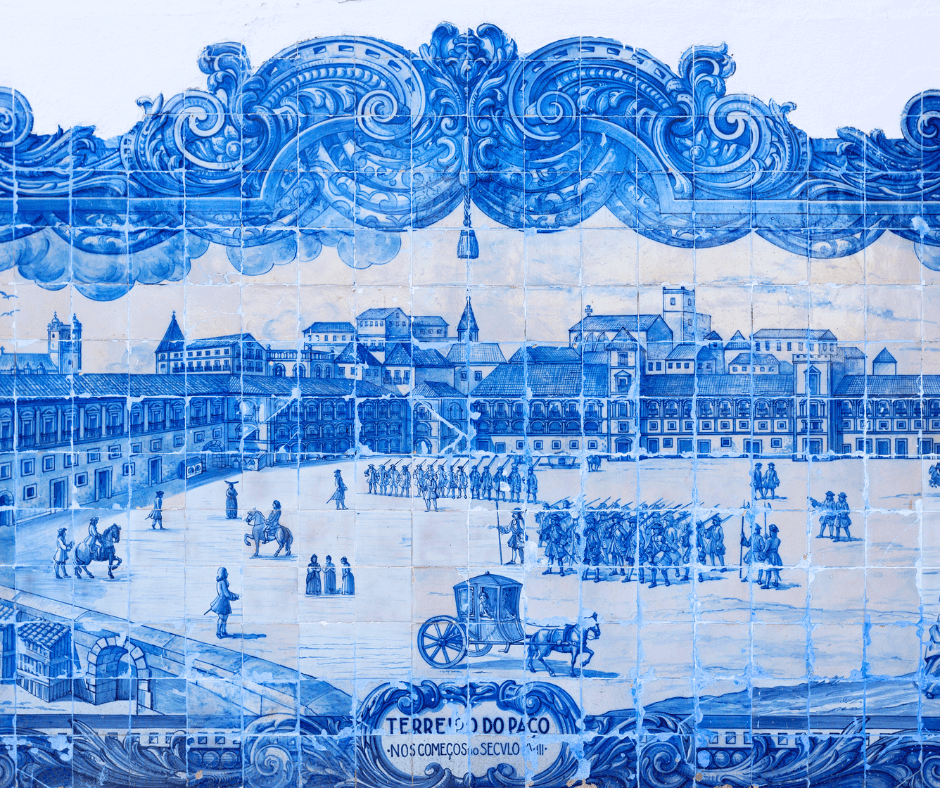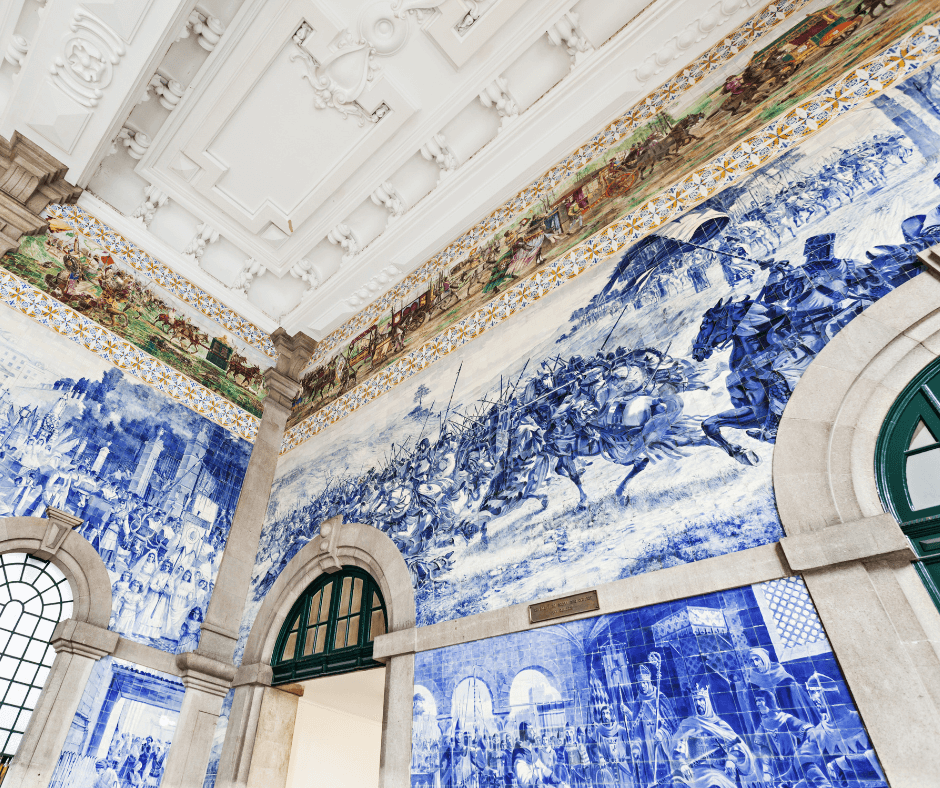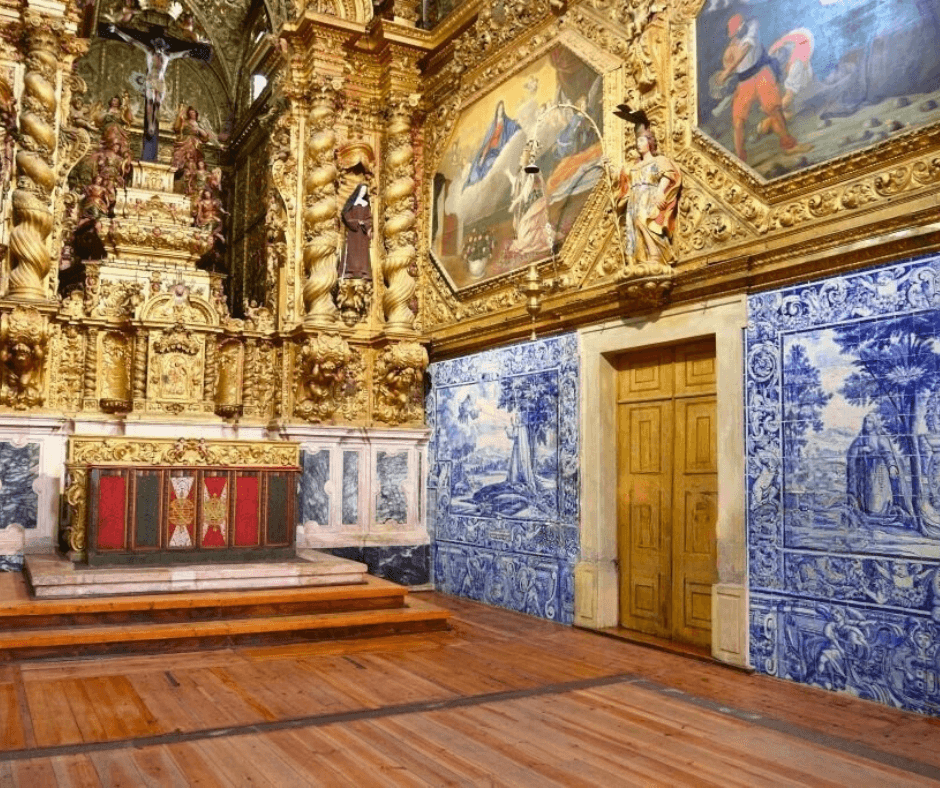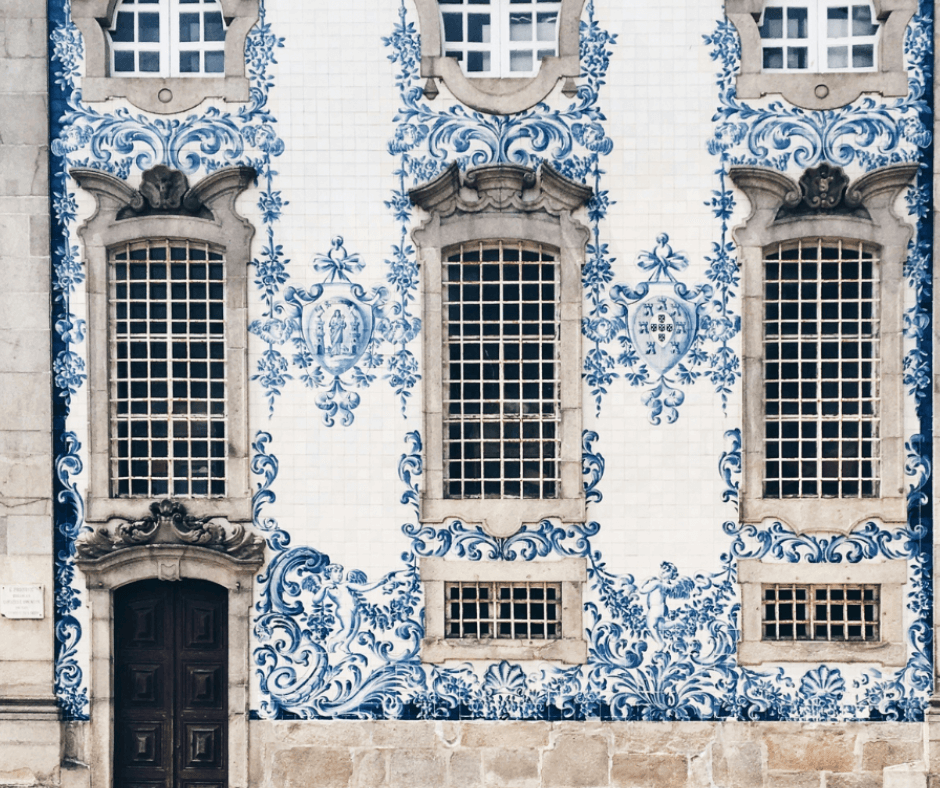Portugal, a land steeped in history and adorned with a vibrant cultural tapestry, beckons travellers to discover the artistry of Azulejos and the charm of its ancient quarters. In this immersive journey, we invite you to explore the captivating intersections of art and history, unveiling the rich heritage of Portugal.
Unveiling Azulejo Artistry
At the heart of Portugal’s artistic legacy lies Azulejo – a form of ceramic tilework adorned with intricate patterns and vibrant scenes. These unique tiles have graced the country’s buildings for centuries, offering a visual feast that tells tales of Portugal’s past. From the iconic blue and white designs to the colourful and elaborate compositions, each Azulejo is a testament to the nation’s craftsmanship.

The origins of Azulejos can be traced back to the Moors, who introduced this art form to the Iberian Peninsula in the 13th century. The term “azulejo” itself derives from the Arabic word “al zellige,” meaning polished stone. Initially, these tiles were predominantly in shades of blue and white, reflecting the Moorish aesthetic. However, over time, Portuguese artisans infused their creativity, resulting in a unique blend of Moorish, Spanish, and Portuguese influences that culminated in the rich and diverse Azulejo tradition we see today.
As you wander through Portugal’s cities, take the time to appreciate the beauty of Azulejo-clad facades. Explore the narrations depicted on these tiles, ranging from historical events to mythological stories. Discover how Azulejo art has evolved over the years, blending Moorish, Spanish, and Portuguese influences into a harmonious visual language that defines the country’s aesthetic. Notable examples include the elaborate scenes found in the São Bento Railway Station in Porto, which narrate significant moments of Portuguese history, and the grand panels of the National Tile Museum in Lisbon, where visitors can trace the evolution of Azulejo art from its inception to modern interpretations.

Suggested Strolls Through Ancient Quarters
To truly immerse yourself in Portugal’s cultural embrace, we recommend curated strolls through the enchanting ancient quarters of cities. Let’s embark on a journey through the cobbled streets and narrow alleys that whisper tales of times gone by.
Lisbon’s Alfama
Begin your exploration in Lisbon’s Alfama, the oldest district of the city. As you meander through its labyrinthine streets, you’ll encounter charming squares, historic churches, and, of course, buildings adorned with Azulejos. Allow the echoes of Fado music to guide you through this atmospheric neighbourhood, providing a soundtrack to your cultural voyage. Don’t miss the Miradouro da Senhora do Monte, offering panoramic views of the city and the Tagus River, where the juxtaposition of ancient and modern Lisbon unfolds before your eyes.

Porto’s Ribeira
Move on to Porto’s Ribeira, a UNESCO World Heritage site nestled along the Douro River. Here, centuries-old buildings are adorned with Azulejos that add a distinctive character to the area. Take a leisurely stroll along the riverbank, cross the iconic Dom Luís I Bridge, and delve into the colourful history that unfolds around every corner. Visit the Church of Saint Ildefonso, whose façade is a splendid example of Azulejo art, depicting scenes from the life of Saint Ildefonso and other religious narratives.

Coimbra’s Alta
In Coimbra, explore the historic Alta district, home to the country’s oldest university. As you wander through the university’s courtyards and libraries, absorb the academic ambiance interwoven with Azulejo embellishments. The city’s ancient charm is best experienced by wandering through its steep streets and catching glimpses of the Mondego River. The Biblioteca Joanina, with its baroque architecture and rich Azulejo decorations, is a must-visit, offering a glimpse into the scholarly heritage of Portugal.

Évora’s Historic Centre
Venture into the heart of the Alentejo region and explore Évora’s historic centre, another UNESCO World Heritage site. This city, with its Roman temple, Gothic cathedral, and charming whitewashed houses, is a living museum. Azulejos can be found throughout Évora, especially in the Igreja de São Francisco, where the Chapel of Bones offers a haunting, yet fascinating display of human remains interspersed with intricate tilework.

Portugal’s artistry, encapsulated in the exquisite Azulejo tiles and preserved within the ancient quarters, invites travellers to immerse themselves in a captivating journey through time. As you explore the vibrant narratives etched in tiles and walk the historic streets, you’ll discover a profound connection to the country’s rich cultural heritage. Embark on this odyssey of art and history, and let Portugal weave its enchanting spell on your soul. Whether you’re marvelling at the grandiose tile panels of a railway station or losing yourself in the winding alleys of a historic district, the essence of Portugal’s artistic spirit will leave an indelible mark on your heart.
For those seeking to enhance their cultural experience, consider staying at one of the Heritage Hotels of Europe in Portugal. These exceptional hotels, located in historic buildings, offer a unique blend of traditional charm and modern comfort. Staying at one of these hotels ensures you are surrounded by the same rich history and artistic beauty that defines the Azulejo tradition, providing a truly immersive Portuguese experience.
